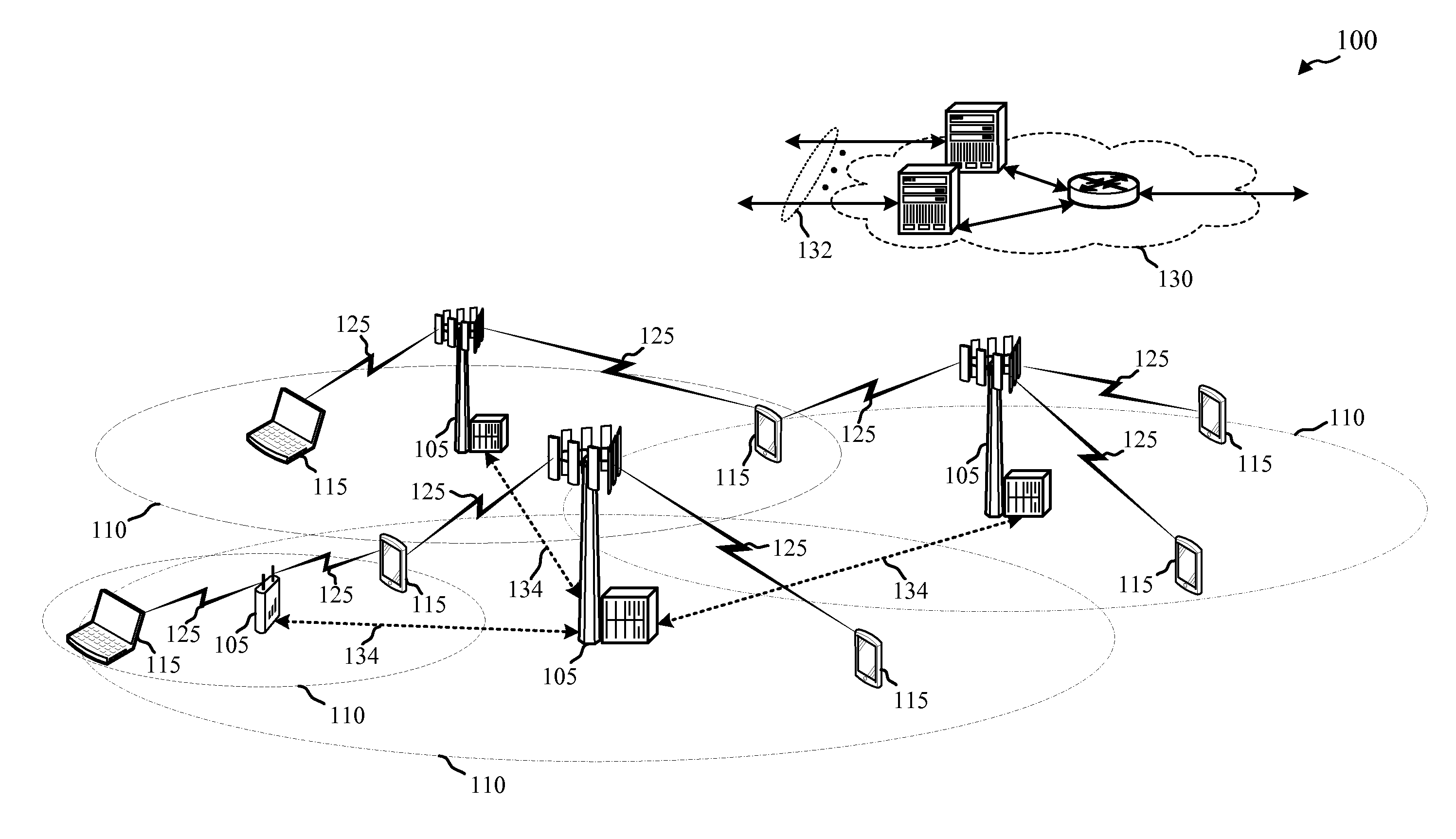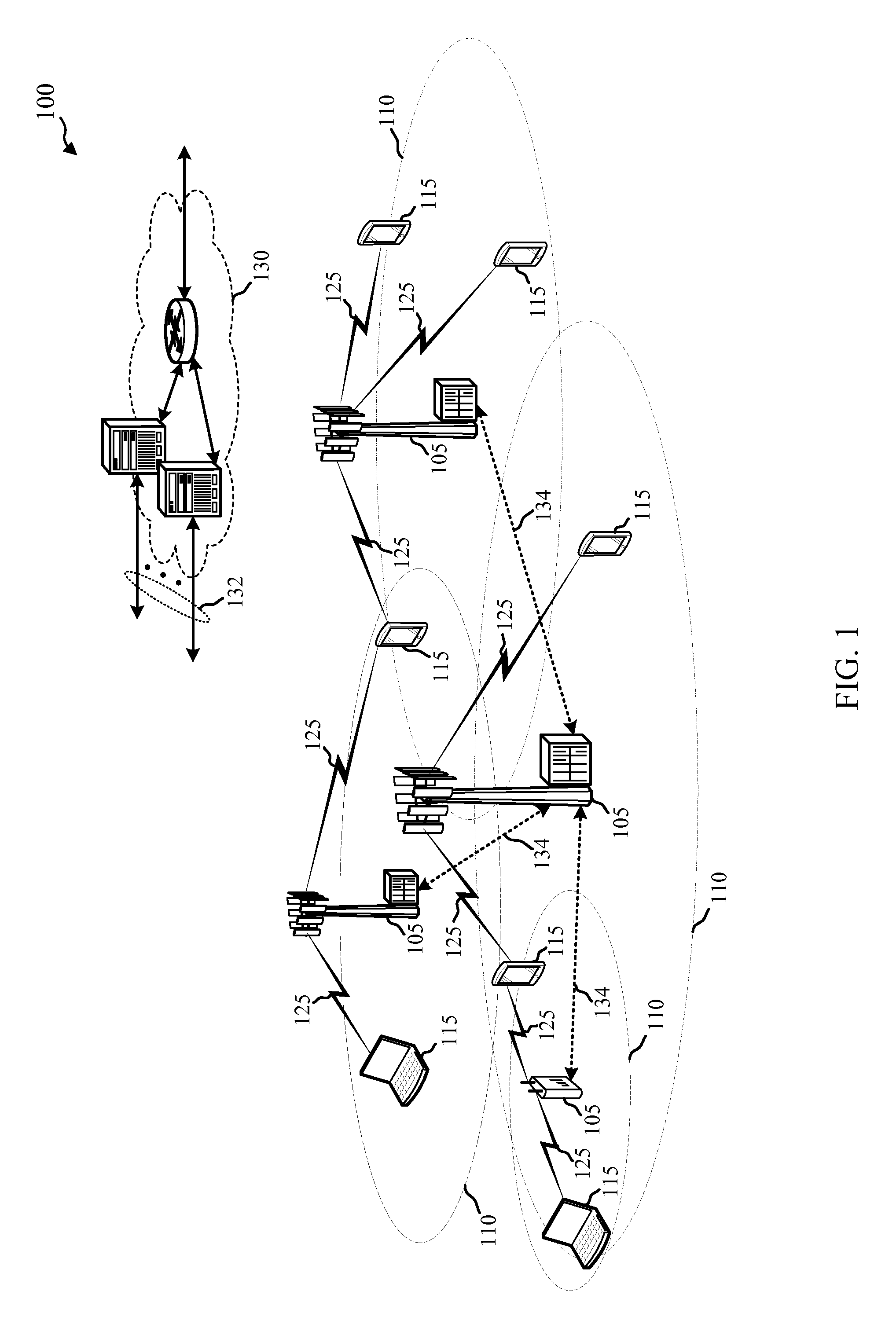Dynamic directional synchronization signals in wireless communications
a dynamic synchronization and wireless communication technology, applied in the direction of synchronisation arrangement, power management, orthogonal multiplex, etc., can solve the problems of inability to detect narrowband signals in every situation, and the fixed configuration of narrowband/wideband signals may not be ideal in every situation, so as to improve detection
- Summary
- Abstract
- Description
- Claims
- Application Information
AI Technical Summary
Benefits of technology
Problems solved by technology
Method used
Image
Examples
Embodiment Construction
[0033]In high frequency systems (e.g., millimeter wave communication systems), a base station may employ a dual-component synchronization signal scheme where two signals are transmitted. A narrowband signal and a wideband signal may be sent, the narrowband signal generally having a higher transmit power spectral density than the wideband signal. The combination of the narrowband signal and the wideband signal components of the synchronization signal generally convey timing information, cell ID, and / or various other parameters associated with the wireless communication system. The two components of the synchronization signal, however, may not be detected equally by UEs for various reasons. For example, the higher power narrowband signal may travel farther than the lower power wideband signal and, therefore, UEs at the edge of a cell coverage area may have difficulty detecting the wideband signal. Topography and / or environment within the cell coverage area may impact detection of one ...
PUM
 Login to View More
Login to View More Abstract
Description
Claims
Application Information
 Login to View More
Login to View More - R&D
- Intellectual Property
- Life Sciences
- Materials
- Tech Scout
- Unparalleled Data Quality
- Higher Quality Content
- 60% Fewer Hallucinations
Browse by: Latest US Patents, China's latest patents, Technical Efficacy Thesaurus, Application Domain, Technology Topic, Popular Technical Reports.
© 2025 PatSnap. All rights reserved.Legal|Privacy policy|Modern Slavery Act Transparency Statement|Sitemap|About US| Contact US: help@patsnap.com



